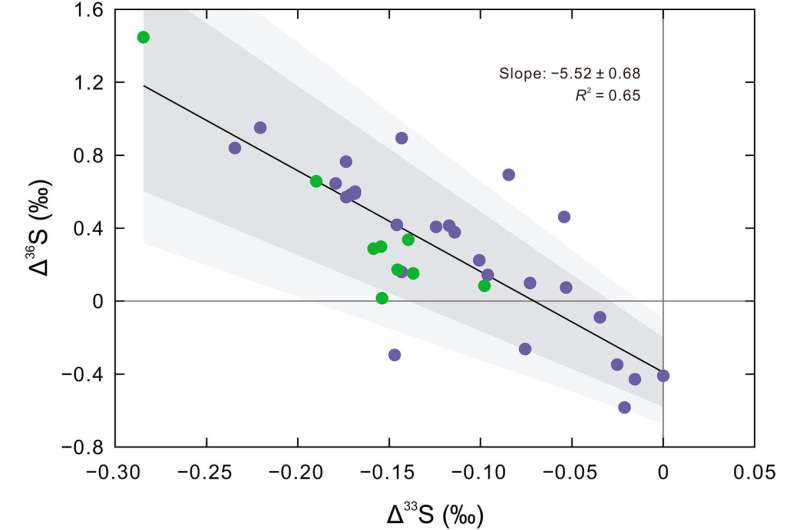This article has been reviewed according to Science X's editorial process and policies. Editors have highlighted the following attributes while ensuring the content's credibility:
fact-checked
peer-reviewed publication
proofread
Researchers illuminate 'Snowball Earth' melting and early life evolution

A research team led by Prof. Shen Yan'an from the University of Science and Technology of China (USTC) of the Chinese Academy of Sciences (CAS) conducted a systematic study of the interglacial stratigraphy in South China by means of high-precision sulfur and mercury isotope analyses.
This study introduced a new perspective, suggesting that the melting of "Snowball Earth" induced large-scale volcanic activities. Furthermore, the research has provided evidence that the gradual oxidation of interglacial oceans created favorable environmental conditions crucial for the evolution of early and complex life. The results were published in Science Advances.
The research team focused their study on the Datangpo Formation in South China, aiming to investigate the changes in the Earth's surface environment and climate system following the thawing of the "Snowball Earth." The Datangpo Formation not only represents a significant source of large and even super-large sedimentary manganese deposits in China but also provides a nearly complete record of the climate and environmental changes between two "Snowball Earth" events.
Based on multiple field surveys and investigations, the team selected a drill core from the Datangpo Formation, spanning hundreds of meters, for geological, stratigraphic, and geochemical analyses. The study results indicate that during the initial stages of the "Snowball Earth" thawing, the chemical composition of seawater was primarily influenced by hydrothermal venting on the seafloor.
This finding indirectly reflects the fundamental differences between the ocean during the "Snowball Earth" period and a normal ocean. During that time, the exchange and circulation of substances among the ocean, atmosphere, and land were severely limited.
The variations in non-mass-dependent mercury isotopes provide evidence for the intensification of volcanic activity during the deglaciation of the "Snowball Earth." In light of this finding, the research team proposed a new perspective that the rapid thawing of the "Snowball Earth" led to a sudden reduction in surface pressure, thereby triggering magmatic activity deep within the Earth and subsequent volcanic eruptions.
They also identified anomalies in the sulfur isotope composition of pyrite in interglacial sediments, including slight non-mass-dependent sulfur isotope fractionation. However, the sedimentary sequence clearly indicates that this minor non-mass-dependent sulfur isotope fractionation is not causally related to volcanic activity. The team then postulates that the minor non-mass-dependent sulfur isotope fractionation is a result of the "Snowball Earth" altering the sulfur isotope composition of seawater sulfates.
In addition, the temporal variations in sulfur isotopes demonstrate a gradual increase in sulfate concentration in interglacial seawater, indicating a progressive oxidation of the atmospheric and oceanic systems during that period. Considering the changes in atmospheric chemistry, a gradual decrease in surface temperatures, and the progressive oxygenation of the oceans during the interglacial period, the team proposed that the environmental and climatic changes on the Earth's surface during the interglacial period promoted the evolution of early complex life forms.
More information: Menghan Li et al, Deglacial volcanism and reoxygenation in the aftermath of the Sturtian Snowball Earth, Science Advances (2023). DOI: 10.1126/sciadv.adh9502
Journal information: Science Advances
Provided by University of Science and Technology of China




















